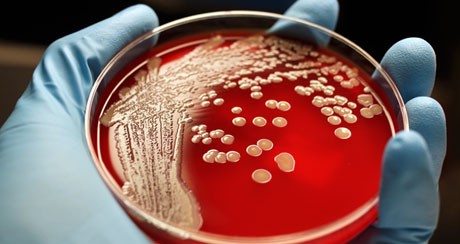
S-649266, which is a parenteral siderophore cephalosporin with a novel mechanism for bacterial cell entry and improved stability to carbapenemases, demonstrates potent activity against a wide variety of Gram-negative pathogens that are resistant to available antibacterials, according to research reported at the 54th Interscience Conference on Antimicrobial Agents and Chemotherapy in Washington, DC.
Investigators ascribe the antibiotic’s efficacy to its so-called ‘Trojan horse mechanism.’
In a symposium for the early new antibacterial agents, Dr. Yoshinori Yamano, with Shionogi & Co., Ltd., in Osaka, Japan, cited animal and laboratory studies that found that S-649266 had more robust antibacterial activity than established antibiotics, including ceftazidime and cefepime, against multidrug-resistant Pseudomonas (MDRP), MDR Acinetobacter (MDRA) and carbapenem-resistant Enterobacteriaceae (CRE). His research also showed that S-649266 has high stability to serine- and metallo-type carbapenemases.
The emergence of bacterial resistance to known antibacterial agents is becoming a major challenge in treating the infection caused by MDR bacteria, he said. In order to treat bacterial infections — especially those caused by MDR bacteria — new antibacterial agents are needed that can overcome bacterial resistance.
Dr. Yamano, who is vice president at Shionogi’s Discovery Research Laboratory for Core Therapeutic Areas, also noted that S-649266 has shown potent efficacy against MDRP and MDRA in rat lung infection models that mimicked human exposure profiles when administered twice daily in an hour-long infusion. The antibiotic has additionally been found to be safe and well tolerated in healthy volunteers in single- and multiple-dose phase 1 studies.
‘S-649266 particularly promising because it acts as a Trojan horse’
S-649266, which was developed by Shionogi, is currently undergoing phase 2 testing. Phase 3 testing is expected to start next year.
Dr. Yamano explained that S-649266 works via a “Trojan horse” strategy, in which a novel siderophore moiety may significantly improve the antibacterial activity by facilitating efficient transport of S-649266 into the bacterium. The use of the iron uptake system may allow S-649266 to effectively treat Gram-negative bacterial infections that are resistant to presently available antibiotics.
“What makes S-649266 particularly promising is its mode of action as a ‘Trojan horse,’ meaning that it is invited in by unsuspecting enemy bacteria which it then defeats,” he said. In Greek mythology, the term “Trojan horse” referred to the use of a large hollow wooden horse filled with Greek soldiers that was brought within the walls of Troy as a trick during the Trojan War.
“Multidrug-resistant rod-shaped bacteria are the key threat in hospitals today, and S-649266 is a promising antibiotic to treat these superbugs,” added Dr. Richard P. Wenzel, professor of Medicine at Virginia Commonwealth University in Richmond and former president of the International Society for Infectious Diseases.
